I want to put logarithmic a scale next to spectrogram. I want the displayed image to be the same as for the linear data. The code for the version with linear scales looks like this:
#include <QApplication>
#include <QMainWindow>
#include <qwt_plot.h>
#include <qwt_plot_spectrogram.h>
#include <qwt_matrix_raster_data.h>
#include <qwt_color_map.h>
#include <qwt_scale_engine.h>
int main( int argc, char* argv[] ) {
QApplication app( argc, argv );
QMainWindow wnd;
QVector<double> heat_values( 100 * 100 );
for( int n = 0; n < 100 * 100; ++n ) {
heat_values[n] = ( n % 100 ) + n / 100;
};
QwtPlotSpectrogram heat;
auto heat_data = std::make_unique<QwtMatrixRasterData>();
heat_data->setValueMatrix( heat_values, 100 );
heat_data->setResampleMode(
QwtMatrixRasterData::ResampleMode::NearestNeighbour );
heat_data->setInterval( Qt::XAxis, QwtInterval( 0, 100.0 ) );
heat_data->setInterval( Qt::YAxis, QwtInterval( 0, 100.0 ) );
heat_data->setInterval( Qt::ZAxis, QwtInterval( 0, 200.0 ) );
heat.setDisplayMode( QwtPlotSpectrogram::DisplayMode::ImageMode, true );
heat.setColorMap( new QwtLinearColorMap( Qt::white, Qt::black ) );
heat.setData( heat_data.release() );
QwtPlot p;
p.setAutoDelete( false );
heat.attach( &p );
p.repaint();
wnd.setCentralWidget( &p );
wnd.resize( 400, 300 );
wnd.show();
return QApplication::exec();
}
and produces the expected result.
However, I want the same image but with different scales, for example logarithmic scales from 1 to 101. But after I change the scales like this:
p.setAxisScaleEngine( QwtPlot::yLeft, new QwtLogScaleEngine() );
p.setAxisScale( QwtPlot::yLeft, 1.0, 101.0 );
p.setAxisScaleEngine( QwtPlot::xBottom, new QwtLogScaleEngine() );
p.setAxisScale( QwtPlot::xBottom, 1.0, 101.0 );
then the spectrogram is all messed up.
Does anyone know how to just change the displayed scale?
msvc 2017, x64, qwt 6.1.4, qt 5.12.2
Edit:
I can get half way there by defining my own RasterData and mapping the coordinates back into bins, but it's still missing the inverse transformation, so the displayed data is a 'log' version of the original.
class RasterData : public QwtRasterData
{
public:
double value( double const x, double const y ) const override {
int const ix = std::min<int>( std::max<int>( 0, x ), m_cols-1 );
int const iy = std::min<int>( std::max<int>( 0, y ), m_cols-1 );
return m_values[iy * m_cols + ix];
}
void setValueMatrix( QVector<double> const& values, int const cols ) {
m_values = values;
m_cols = cols;
}
private:
QVector<double> m_values;
int m_cols;
};
then result then looks like this:
But essentially I want to avoid all of these tranformations. I want it to just transform the image data passed in via setValueMatrix into an image using the set color map and stretch that image to fit the plot.




